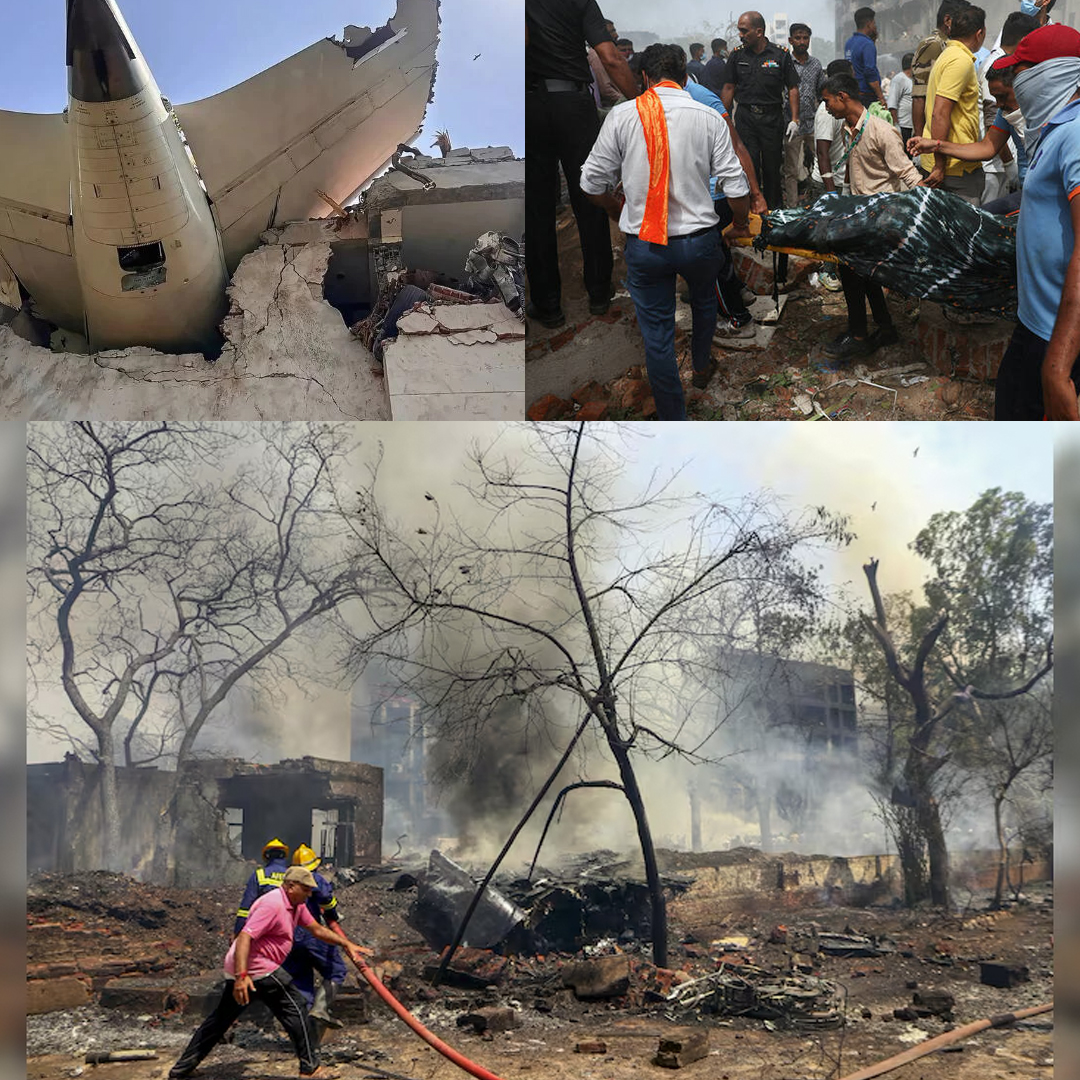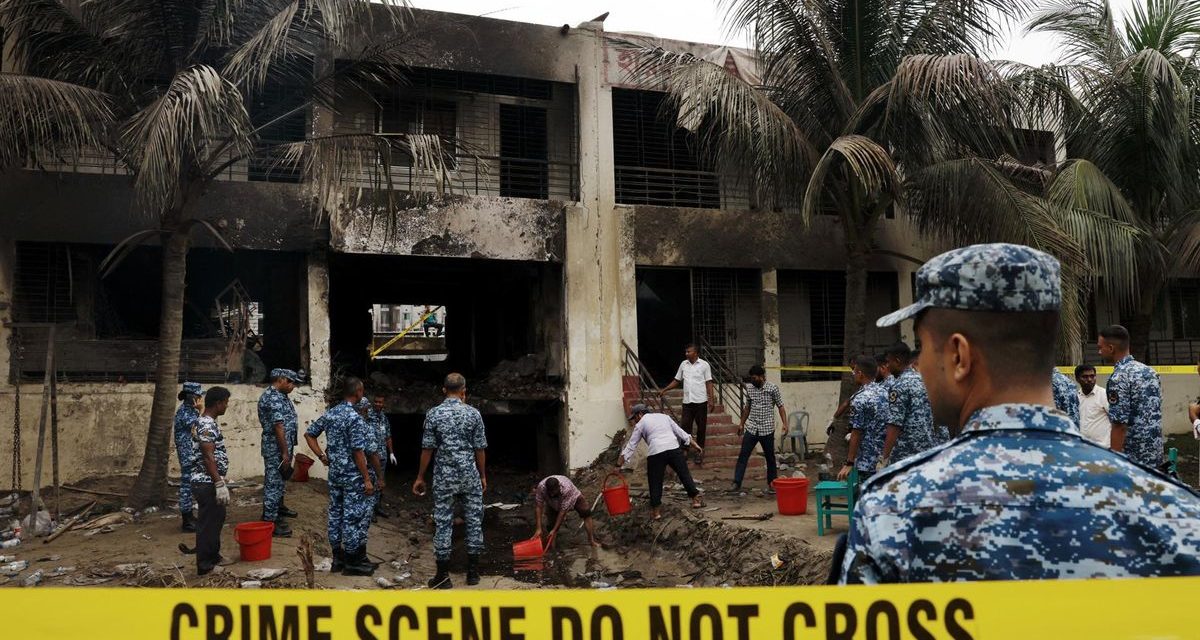
Tragic Air India Flight AI-171 Crash: Preliminary Investigation Uncovers Unexpected Engine Shutdown Moments After Takeoff; Final Cause Still Under Review Amid Ongoing Prob
On June 12, 2025, tragedy struck when Air India Flight AI-171, a Boeing 787-8 Dreamliner, crashed shortly after takeoff from Ahmedabad’s Sardar Vallabhbhai Patel International Airport. The flight, headed to London Gatwick Airport, carried 242 people on board, including 228 passengers and 14 crew members. The crash resulted in the deaths of 241 people on the aircraft and 19 individuals on the ground, making it one of the deadliest aviation disasters in recent history. Only one person, a British national named Vishwash Kumar Ramesh, survived.
The Aircraft Accident Investigation Bureau (AAIB) of India has released a 15-page preliminary report providing critical insights into the moments leading up to the catastrophe. While the full cause remains under investigation, this report sheds light on a crucial factor that precipitated the disaster – the unexpected cutoff of fuel to both engines.
Flight Overview and Crash Details
Air India Flight AI-171 took off smoothly from Ahmedabad airport, climbing to an initial altitude when, approximately 32 seconds after liftoff, both engines suddenly lost thrust. The aircraft rapidly descended and crashed into a nearby medical college dormitory. The devastation was immense, resulting not only in the near-total loss of life aboard but also collateral fatalities and injuries on the ground.
The Boeing 787-8 Dreamliner was carrying approximately 54,200 kg of jet fuel, sufficient for the transcontinental flight to London. The maximum takeoff weight was recorded at 213.4 tons. The flight crew had been performing standard departure procedures when the emergency unfolded.
Fuel Cutoff Switches Activated: The Central Mystery
The AAIB’s preliminary findings reveal that both engine fuel cutoff switches were moved from the “RUN” to the “CUTOFF” position within one second of each other shortly after takeoff. This sudden change resulted in an immediate shutdown of the aircraft’s engines, causing an abrupt loss of thrust that the pilots could not recover from in time.
Cockpit voice recordings reveal an urgent and perplexing exchange between the two pilots. One pilot questions the other, “Why did you cut off?” to which the response is, “I did not.” This brief dialogue suggests confusion and raises critical questions about how the switches were moved to the cutoff position, whether by accident, mechanical fault, or other causes.
Attempts to Recover and the MAYDAY Call
Following the engine shutdown, the pilots tried to restart the engines. One of the engines showed some signs of relight, but the aircraft had already lost significant altitude. The pilots transmitted a “MAYDAY” distress call, signaling a critical emergency.
Despite their efforts, the aircraft’s altitude dropped rapidly, and within seconds, it crashed, leaving little time for further maneuvers or emergency responses. The quick progression of the emergency underscores the severity of a dual-engine failure so close to takeoff.
Investigation Status: Cause Still Undetermined
While the preliminary report clearly identifies the fuel cutoff as the immediate trigger for the crash, it does not conclude whether this action was caused by pilot error, mechanical malfunction, or other external factors. Both engines and the associated fuel system components have been recovered and are undergoing detailed forensic examination.
The AAIB has emphasized that the investigation remains ongoing and that a final, comprehensive report will take months to complete. The complexity of the case, involving cockpit systems, pilot interactions, and possible human factors, demands thorough analysis.
Safety Mechanisms and Questions Raised
The fuel cutoff switches on commercial aircraft are designed with safety interlocks to prevent accidental activation. Their mechanical locking systems make it unlikely for them to be unintentionally moved during normal operation. This aspect has deepened the mystery surrounding the incident and led to questions about whether a technical malfunction or even sabotage could be factors.
Experts and aviation safety analysts have expressed concerns about the preliminary findings, calling for full transparency and comprehensive testing of the fuel control systems. The families of victims and the aviation community are demanding answers about how such a critical control could be overridden without detection or correction.
Public and Expert Reactions
The release of the AAIB preliminary report has elicited mixed reactions. Aviation experts caution against jumping to conclusions, urging patience until all data — including flight data recorders, cockpit voice recordings, and engineering analyses — is fully evaluated.
Meanwhile, the families of those lost in the tragedy have expressed frustration with the slow pace of information and the initial report’s lack of definitive conclusions. Advocacy groups are calling for improved airline safety protocols, enhanced cockpit monitoring systems, and more rigorous pilot training to prevent similar incidents.
Broader Implications for Aviation Safety
The AI-171 crash highlights critical areas for potential improvement in aviation safety, particularly in the design and safeguarding of essential controls like fuel cutoff switches. It also underscores the vital importance of cockpit resource management, pilot training, and rapid emergency response capabilities.
Globally, regulatory bodies may take note of this incident to review standards around engine fuel controls, cockpit system designs, and accident investigation transparency. Airlines and manufacturers are likely to reassess how mechanical safeguards can be reinforced to avoid accidental or unauthorized fuel cutoff events.
Conclusion and Future Outlook
The crash of Air India Flight AI-171 remains a heartbreaking reminder of the inherent risks of air travel and the complexity of modern aviation systems. The AAIB’s preliminary report has identified a sudden fuel cutoff to both engines as the proximate cause of the crash, but many critical questions remain unanswered.
The investigation continues with forensic examinations of recovered engines and fuel systems, pilot records, and cockpit communications. The aviation industry and the public await a final report that will hopefully clarify the root causes and offer recommendations to prevent such disasters in the future.
As families mourn their lost loved ones, the hope is that lessons learned from this tragedy will enhance air travel safety worldwide and ensure that such an event never recurs.
source : thedailystar







